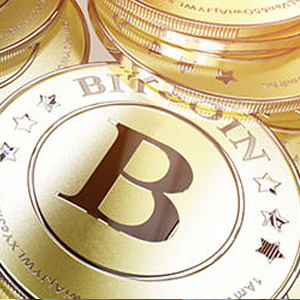
Where there is trading, there has always been an opportunity for fraud and eBay, in spite of all its rules and regulations, is no exception.
Scams will often be specifically framed with the rules in mind, so that if a dispute is raised, the scammer can rely on its being resolved in his or her favor.
So, to avoid being the target of scammers it’s important to be aware of the rules and to make it perfectly clear to potential scammers that you are in the know.
That way, they will probably not target you, and if they do, there’s a good chance that you will win any dispute.
1. Denial Of Delivery
The first rule for a seller is always to insist on a delivery service that supplies proof of delivery. There are now very strict rules on delivery disputes.
For purchases of up to $250 in value, simply insisting on a service that provides proof of delivery should give you protection against the basic scam where the buyer denies receiving the goods and demands his money back.
If you can supply a delivery record to the registered shipping address, then the buyer can complain all he likes about non-delivery. The delivery confirmation will protect you.
2. Absence of a Signature
If the purchase price is more than $250, then there is an extra safeguard which it’s vital to be aware of. The seller needs to produce a signature on delivery. There are no exceptions to this rule, so if you sell an item for $251, and the buyer denies receiving it, then you will have no recourse to PayPal in the absence of a signature.
They will refund the buyer’s money even if you are in possession of delivery confirmation to the eBay registered address.
The buyer may have an abysmal record, with complaint after complaint against him, and you may have proof of delivery to his address.
It won’t matter. You are going to lose the dispute if you don’t have the scammer’s signature acknowledging delivery.
3. Credit Card Issues

Another version of the ‘denial of delivery’ scam is when the buyer uses his credit card to pay through PayPal. In that scenario, the transaction is reversed at the instance of the buyer, who asks his card company to make a chargeback.
They will do so, taking the money from PayPal, and in this case, PayPal will be even less keen than ever to take the seller’s side.
It has actually lost money, and that’s not something it’s likely to allow. The extra complication of a credit card makes it more likely that the scam will succeed.
The remedy is to make sure you are within the eBay seller’s protection policy by only delivering to the buyer’s officially registered eBay shipping address.
If you have done that and you have obtained proof of delivery and a signature if applicable, then the buyer’s claim of non-delivery will not work.
4. Old and New Items
If, on the other hand, the buyer is saying that the goods were faulty or broken and is requesting a chargeback for one of those reasons, proving delivery isn’t enough. One scam is for a buyer to order a piece of equipment apparently identical to a faulty item they own. They can use a credit card to buy through PayPal to create additional protection for themselves and to facilitate a chargeback request.
They then complain that the item they have received is faulty and they produce the item they already owned, which is indeed faulty.
The aim is to get a free replacement item. They get their money back, return their old item, and keep the new one.
How can you protect yourself against this sort of substitution, and the allied one where the buyer claims that an item was damaged in transit and claims his money back on that basis, after deliberately damaging a similar but faulty item that he owns?
The solution is to make sure that any high-value item you are putting up for sale is individually identified. Electronic items should have their serial numbers noted and photographed, and the photo placed up on eBay along with your listing. That should be enough to deter a potential scammer. Non-electronic items could have unique features noted and photographed as well.
5. Shipping Addresses
It’s been noted above that you should never ship an item to an address that’s not the buyer’s official shipping address. By doing so, you put yourself outside protection, and any evidence that you delivered to an address that you were specifically asked to won’t help, if it’s not the registered shipping address.
The rationale for this rule is that scammers could hack into a PayPal account, or use a stolen credit card, to order goods for delivery to an address controlled by the scammers.
They then disappear without a trace along with the goods. The money taken from the purported buyer’s account will be refunded to them by PayPal, who will then pursue you for repayment.
In this scam there are two victims, the buyer and the seller, but only one will be the loser and that will be you unless you protect yourself. Scammers will come up with imaginative tales to persuade you to deliver to a different address.
Some may say that they want delivery to be made elsewhere as a surprise gift to a child, or maybe they are about to be posted overseas with the army and want a delivery to be made to a loved one who will be left behind. Don’t listen! There’s nothing to stop them from changing their official shipping address to the one where they want the goods shipped to. Insist on that, and avoid the scam.
6. Virtual Property

A variation of the combined hacking/diverted delivery scam is one where the trade is in virtual property.
A recent case, reported in the Guardian on 1st March 2014, involved an eBay seller who put his savings into Bitcoins, and wanted to cash them in. He put them on eBay and sold them to a couple of buyers with good online reputations.
Sadly the accounts in question had been hacked, and ownership of the virtual wallets into which, at the request of the ‘buyers’, the Bitcoins had been paid was, as always, anonymous.
The coins disappeared, and the ‘buyers’, who actually knew nothing of the transactions until the purchase money disappeared from their accounts, were refunded in full.
PayPal is now pursuing the seller for the proceeds of sale, which he had spent before knowing about the scam. The seller didn’t know, until it was too late, that the trading of virtual goods isn’t covered by sellers’ protection.
There is a way round this rule for those who are determined to trade in virtual currency on eBay. The coins can be stored on a memory stick or printed out on paper and then be physically delivered to the shipping address, not forgetting the signature rule if the value is above $250.
7. Old-fashioned Scams
Old-fashioned scams still exist, alongside the virtual ones. Big sellers with commercial premises should remember the obvious tricks.
Make sure that goods are not physically released without proof that payment has been made.
It’s been known for buyers to pay for collection and transport of valuable goods, and for those goods to be released to them by careless sellers without payment, because of lax procedures.
8. Not following the rules
On eBay, the usual adage, ‘let the buyer beware’, is reversed. The rules tend to protect the buyer unless the seller takes precautions.
The rules are not difficult to follow, so if they are neglected, the seller really has only himself to blame.
